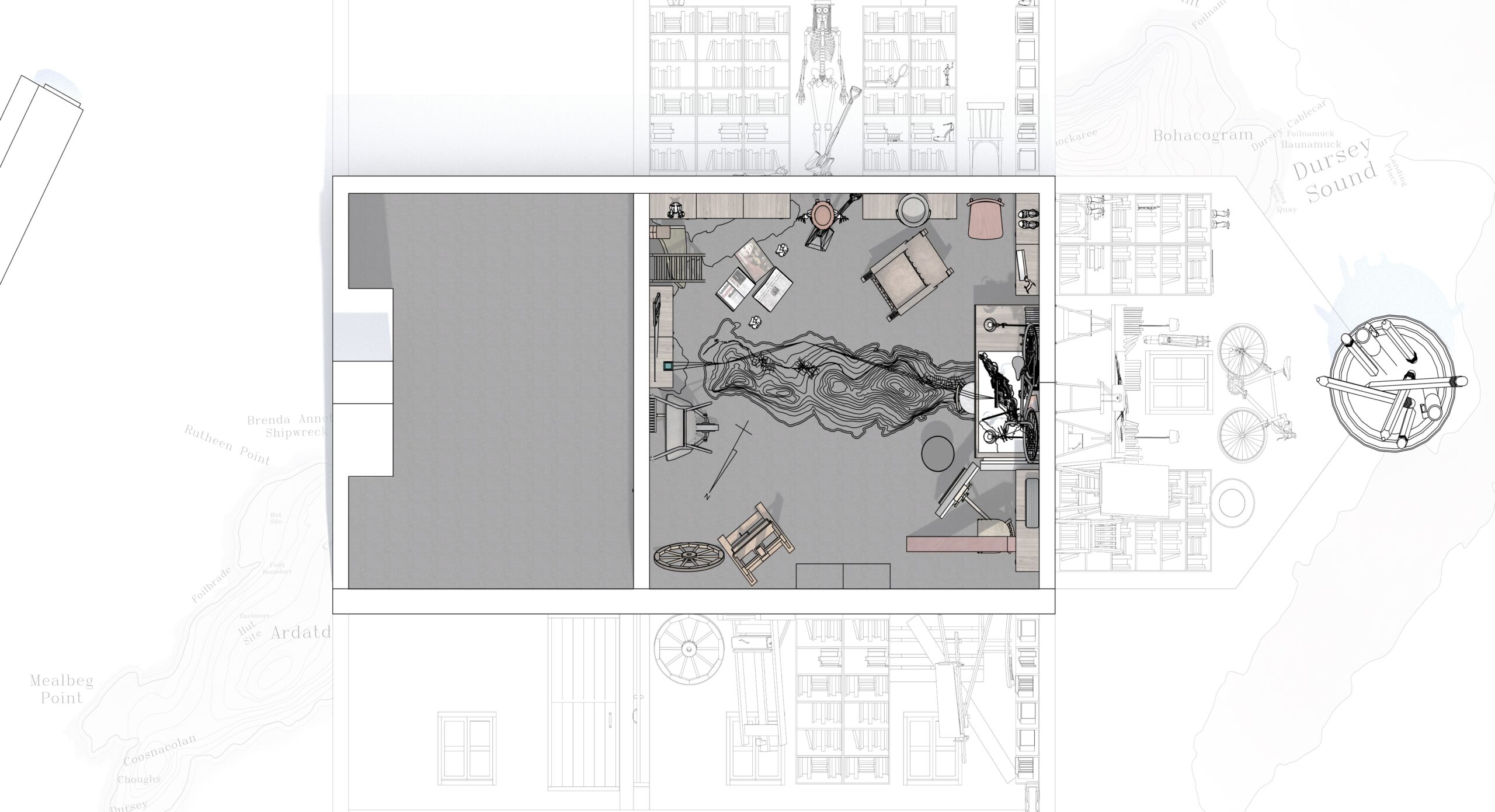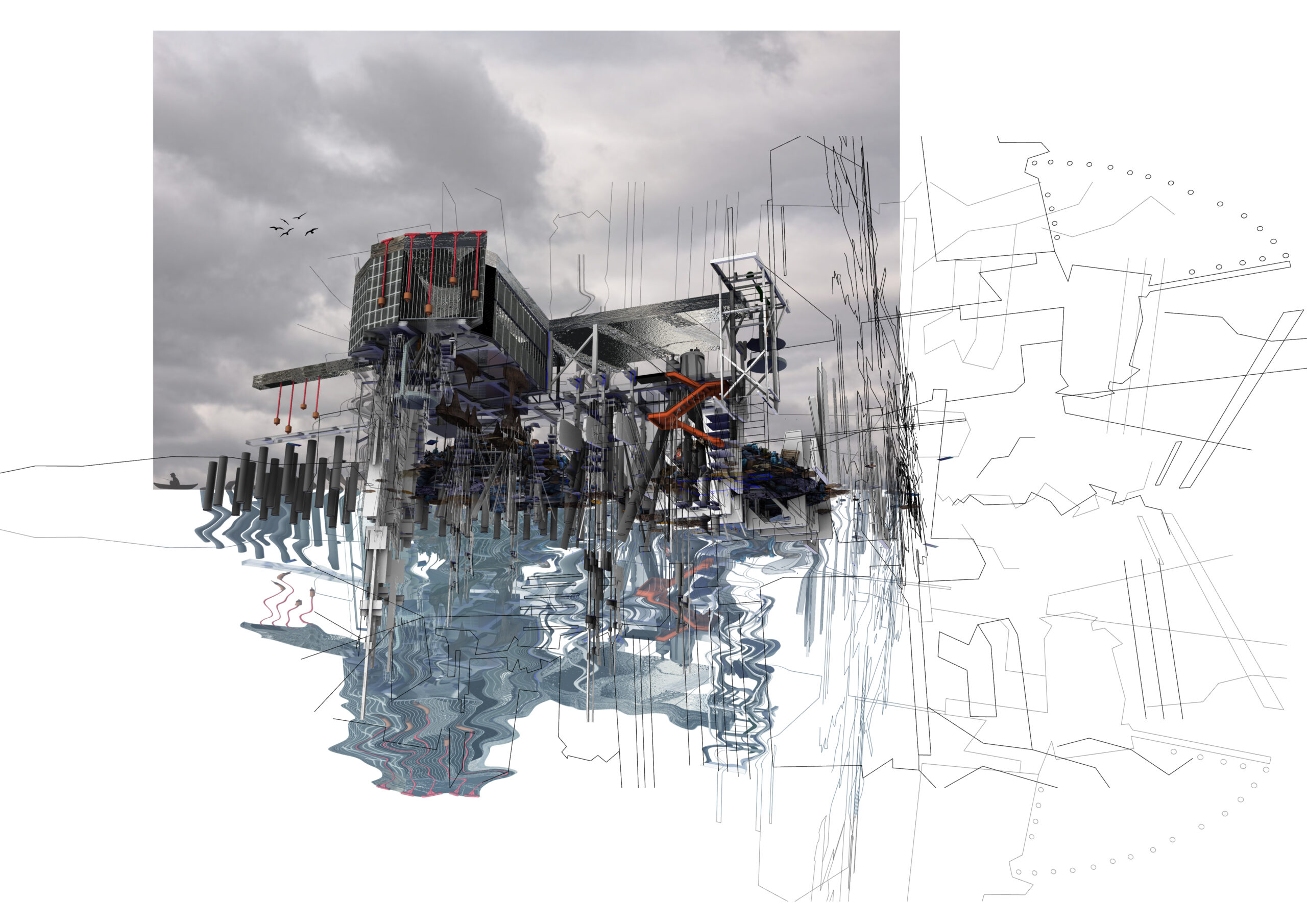
An examination of the works and methodologies of artist-bricoleur Tomi Ungerer prompts the reimagination of Dursey island, as a landscape for a community of creatives, researchers and artists to inhabit the island while engaging in the bricolage of materials, skills and ideas.
Ungerer’s studio in West Cork, Place du Bricoleur, is explored as a contained version of his creative vision. The thesis relies on Ungerer’s methodologies as an artist, as well as his mythological depiction of an Irish island in his book Fog Island. A vision for a remote life is illustrated in Ungerer’s Far out isn’t Far enough: Life in the Back of Beyond, and this vision is projected onto Dursey island as an uninhabited island which perfectly manifests his description of a “life at the edge of the world”. Ungerer’s ‘Place du Bricoleur’ is envisioned as a site within a site, and methodologies collected from his studio are interlaced with observations collected from Dursey island.
An adopted methodology of bricolage and improvisation generates a series of architectural interventions, conceptually informed by artefacts held within Ungerer’s Place du Bricoleur studio. The intention is to emphasize the role of found materials for the project, and to highlight the potential role of improvisation in provoking new modes of design that encompass creativity and adaptation. The project engages with the question of scarcity, and the potential it holds to establish new ways of interaction with the material world. In this way, the thesis proposes the reimagination of a self-sufficient community that employs an island way of dwelling. Dursey island, a uniquely situated and uninhabited island, is reimagined as a creative and functional landscape. In keeping with Ungerer’s vision for a life at the edge, the proposed interventions are situated in proximity to the island’s distinct cliffs, and presented in a style informed by Ungerer’s work as an illustrator. The island becomes a landscape for creative expression, as well as for research and experimentation to facilitate the generation of novel perspectives and ideals. Through various acts of bricolage, a scenario is presented for sustainable future modes of living, working, and learning.

This thesis proposes islands as a purgatory. By applying Dante’s journey through purgatory in The Divine Comedy, this thesis proposes the island as a site to visualise modern punishment in a reformed way. Like purgatory, islands are places for the individual to be on a special furlough on earth for a short amount of time. The vicious circle of humanity is being achieved. The thesis identifies three sins of Dante. Situated on the West Coast of Ireland (a place rich in afterlife mythology), and adjacent to the Aran Islands, the islands recontextualise three sins mentioned by Dante (Avarice, Gluttony, and Pride) into a contemporary phenomenon and problem with excessive consumption and material way. The sins are experienced as three new island settings.
The journey through the first island of Avarice is motivated by the human experiential transition from greed to generosity. The second island of Gluttony addresses the sin by visualising the mouth as the conveyor of food and poetry. Hence, the proposal of a culinary/poetry studio that also collects and filters waste. The architecture on the third island addresses the proud souls and waste as exhibition. Through exploring, surveying and drawing the island’s ground fabric, new proposals emerged.
Each island has elements of recompositing found objects at new scales in them. The three islands will become a journey during which the individual reflects on past indulgences and makes amends to the behaviour. They operate between conceptual, literary and environmental concerns. The project develops technology to address the environmental issues of open waters. Each island filters waste. The juxtaposition between waste as pollution and waste as a design piece creates a heterotopic atmosphere. This blurs the line between what is hidden in waste and how it becomes architecture.
‘Waste is the inevitable entropic outcome of what we call progress.’
This reveal influenced the design of the proposals. By placing the thesis in a contemporary context, the modern sin of waste will be investigated. The thesis plays on the likeness between the circularity of Dante’s circles of hell and the circularity of reuse. A path to damnation is not being proposed in this thesis. It proposes a path to a place of renewal and self-renovation.

